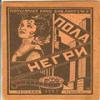Spherical harmonics can be used to store a function on the surface of a unit sphere. in simpler terms, this means that if you have a point in space then you can pick a normalized direction from that point and use SH to get back a value for that direction. It's basically like having a cubemap, where you also use a direction to look up a value. The catch with spherical harmonics is that they can usually only store a low-frequency (very blurry) version of your function. The amount of detail is tied to the order of the SH coefficients: higher order means more details, but it also means more storing more coefficients (the number of coefficients is Order^2). In general 3rd-order is considered sufficient for storing diffuse, since diffuse is very smooth at a given point.
To compute SH coefficients, you have to be able to integrate your function. In your case the function is the radiance (incoming lighting) at a given point for a given direction. The common way to do this is first render a cubemap at the given point, and then integrate the values in the cubemap texels against the SH basis functions. Rendering the cubemap is easy: just render in the 6 primary directions and apply lighting and shaders to your geometry the way that you normally would.For performing the integration, there's some pseudo code in Peter-Pike Sloan's "Stupid SH Tricks" paper. Another way to do this would be to use a ray-tracer, and shoot random rays out from the sample point and perform monte carlo integration.
Once you have the SH coefficients at all of your sample points, you can interpolate them based on the position of the surface being shaded. Then you can "look up" the diffuse lighting from the coefficients using the normal direction of the surface.
Thanks for the quick reply MJP. After another night reading specific papers (and your response...)
Assumption #1
In my mind a "light probe" is a point in space X where I want to store incoming radiance from a set of VPL (virtual point lights).
To store this incoming radiance the "Rendering Equation" must be solved L(X,W) somehow; evaluating this equation can tell us how much radiance is coming to point X from direction W.
Rendering Equation is complex to solve and one way to solve it is "Monte Carlo" integration.
Assumption #2
Spherical Harmonics can be used to store incoming radiance to X and approximate the "Rendering Equation".
What I don't get :-(
To compute SH coefficients, you have to be able to integrate your function. In your case the function is the radiance (incoming lighting) at a given point for a given direction. The common way to do this is first render a cubemap at the given point, and then integrate the values in the cubemap texels against the SH basis functions. Rendering the cubemap is easy: just render in the 6 primary directions and apply lighting and shaders to your geometry the way that you normally would.For performing the integration, there's some pseudo code in Peter-Pike Sloan's "Stupid SH Tricks" paper. Another way to do this would be to use a ray-tracer, and shoot random rays out from the sample point and perform monte carlo integration.
This what I don't understand from your reply: It's necessary to render the cube maps? I mean I understand that SH will help me "compress" the cube maps (becouse storing them for let's say 32x32x32 grid of probes would requires too much memory)....and then lookup them using SH...but wouldn't be too expensive create those cube maps in real time? I'm using RSM to store virtual point light of the scene...is it possible to store incoming radiance into SH without using Cube Maps?
Thanks for future reply
EDIT:
Another way to do this would be to use a ray-tracer, and shoot random rays out from the sample point and perform monte carlo integration.
This is close to my goal: I have a probe point in space and I have n VPL...I want to shoot ray over the point sphere (hemishpere) and compute the form factor between the point and n VPL. But storing those informations requires a lot of memory....so SH comes in help....





